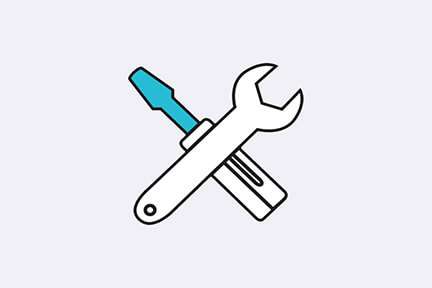Troubleshooting Your Hearing Aids: Common Issues and How to Solve Them
Hardware can always be susceptible to technical difficulties, and hearing aids are no exception. They are complicated pieces of machinery and sometimes hearing aid wearers can encounter issues with their hearing aids. If you're having complications with your hearing aids, you have two main options: 1) Go to a clinic by you for in-person support, or 2) Try to troubleshoot the issues yourself.
Hearing aids can get wet, they can start making funny noises, or they can completely stop working. Keep reading to find some solutions to common hearing aid problems.
If Your Hearing Aid Stops Working…
While it may seem obvious, the first step to take if your hearing aid is not working is to check that it’s on! To do this, you'll need to establish that your hearing aid has a working battery. If you're not sure whether the battery is charged or not, try a new battery and see if you hear a chime when the battery door shuts. Changing the battery is one of the easiest methods of hearing aid repair.
Try Hearing Aids With 45-day Free Trial
If you think your battery might be out of power, try swapping the old one out for a fresh one. Check to make sure the battery is inserted correctly and that your hearing aid turns on when the battery door is shut. If you’re sure that the hearing aid is on and the battery is working properly, check the tubing and the earmold. Make sure there is no wax or moisture clogging up your hearing aid. Are you ready for change? Watch our latest video: [embed]https://vimeo.com/364392774[/embed]
If the Sound is Too Weak…
If you’re encountering a sound issue with your hearing aid, the first thing is to check your dome for earwax. Your dome could be clogged up with earwax and need replacing. If your dome is starting to look yellow in color, it is likely time to replace it. If you have a RIC hearing aid, you should take off your dome and check the wax guard beneath it (the small white circular piece of plastic) to see if it is clogged. The wax guard on your hearing aid can be replaced easily with the small black plastic tool that was included in your hearing aid purchase. If you have an open-fit hearing aid, such as the Dia, you should check your tube to see if there is any earwax inside—this could block sound from reaching your ear. If the tube is clogged, you will need to replace it; you can purchase new tubes on our website or send your hearing aid in for a cleaning! Alternatively, you can clean out the tube using the small blue plastic piping that was included with your hearing aid. Run this piece of plastic through the center of your tube to push out any dried earwax. If all of the above solutions sound a bit daunting, you can simply purchase the Audicus Clean & Care package and have us take a look at your hearing aid for you. Once we receive your hearing aid, we will clean out any earwax buildup, replace the domes, replace the wax guards, replace the batteries, and send you back a full new pack.
If Your Hearing Aid Gets Wet…
Another common hearing aid problem is when hearing aids get wet. If you accidentally wore them in the shower or just spent too long in a humid environment, it can affect your hearing aids. In some situations, you may even cause permanent damage to the devices. Luckily, there are steps you can take for hearing aid repair. Let your hearing aids air-dry, or put them in a bowl of uncooked rice to absorb the moisture. Check out this post for an in-depth look at how to approach wet hearing aids.
If Your Hearing Aid Starts Making Noises…
Are your hearing aids making a whistling noise? Commonly called “feedback,” this noise is often due to improperly fitting earmolds. To stop feedback from happening, take out the mold and re-insert it in your ear. The whistling noise should stop once the device is fitted correctly inside your ear. Changing the dome size of your hearing aid can also help. If the dome does not form a sung-fit in your ear, it can cause sounds to leak out and air to make uncomfortable noises. Whistling can also be caused by a buildup of wax. If you’re hearing a buzzing noise, it’s possible that you accidentally turned on the loop (telecoil) setting. Check that you haven’t activated the loop setting, and if you have, switch back to the normal microphone setting. Most common hearing aid problems can be solved by refitting your ear mold, checking for wax or moisture, inspecting the tubing for blockage or damage, and replacing the battery in your hearing aid. If these solutions don’t fix your issue, be sure to contact your audiologist for help—there could be something inside the device that is malfunctioning, and you’ll want to get it checked right away!




